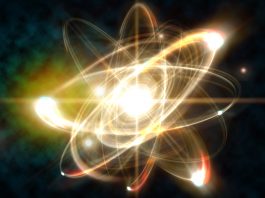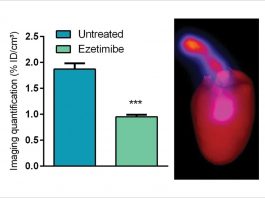Professor Barbara Jacak, Director of the Nuclear Science Division at the Lawrence Berkeley National Laboratory, spoke to The Innovation Platform about leading the US nuclear physics community and the diverse research activities taking place at the lab.
One the leaders of the nuclear physics community in the United States, Professor Barbara Jacak is Director of the Nuclear Science Division at the Lawrence Berkeley National Laboratory (Berkeley Lab). Her research focuses on the experimental study of the quark-gluon plasma via experiments conducted at Brookhaven National Lab’s RHIC and CERN. She was also active in the development of the US national nuclear physics programme, serving on the Long Range Plan working groups in 1995, 2001, and 2006.
The Innovation Platform’s International Editor, Clifford Holt, spoke with Jacak to discuss the work that takes place in the Nuclear Science Division at Berkeley Lab, including the search for neutrino-less double beta decay, developing a better understanding of the quark-gluon plasma, and work on lattice quantum chromodynamics (QCD) calculations.
Berkeley Lab
Different countries (and perhaps continents) define nuclear physics in different ways. In the US the definition is relatively broad, and Berkeley Lab is quite well aligned with that. “In a general sense,” Jacak said, “we focus on answering such questions as: What is the structure of nuclei? How do nucleons correlate with one another? And how is the many body interaction among nucleons giving rise to the properties of different nuclei?
“We have an 88 inch cyclotron on site at Berkeley, the magnet of which is 60 years old (although, of course, the ion sources etc. are much newer). We use that to make super heavy elements (such as elements 113 and 115) and measure their properties. We have a spectrometer which we use to directly measure the mass of isotopes in those elements, and we also use the cyclotron to study nuclear astrophysics, as we focus on neutron rich nuclei,” the Professor explained.
While the team typically employ the cyclotron in such heavy element science, however, it is also made available for chip testing. This plays an important role in testing the effects of cosmic rays on electronics used in space-based missions.
The cyclotron is also used to test sensors. “One current and exciting example of this has been the development of silicon pixel sensors, which we have been undertaking in collaboration with CERN,” Jacak told The Innovation Platform. Here, a section from Berkeley Lab’s Nuclear Science Division is involved in heavy ion collisions at the ALICE experiment at the LHC. “Such experiments need to track large numbers of particles at a time because a single heavy ion collision creates around 10,000 particles. When developing these pixel detectors, it is important to ensure that they are robust against radiation damage. We therefore test them in our cyclotron,” she went on.
A team from the Nuclear Science Division is building a large gamma ray tracking detector called GRETA (the Gamma-Ray Energy Tracking Array), which will be hosted at the FRIB facility being constructed at Michigan State University. This will be similar to AGATA (the Advanced GAmma Tracking Array) in Europe. Having multiple experiments with related technologies is extremely useful because it enables the community to explore the many different nuclei and to put together what has been learned about the properties. It also means that the data being generated can be crosschecked.
Heavy ion physics at RHIC
Outside of the cyclotron at Berkeley Lab, Professor Jacak and her team are also investigating some of the more unusual phenomena associated with heavy nuclei, particularly as they are heated to extreme temperatures. This builds on previously developed knowledge of how, when nuclei are heated to very high temperatures – some 4 trillion degrees Kelvin, which can be achieved at the Relativistic Heavy Ion Collider (RHIC) or even higher (which can be achieved at the LHC) – they can behave in unexpected ways. For instance, it was predicted and confirmed that such high temperatures would result in the nuclei unbinding into their constituent nucleons and protons and that, beyond that, the neutrons and protons would also dissolve into their constituent quarks and gluons. However, while it was also predicted that these temperatures would make the collective nuclei and their constituent parts behave like a gas, the experiments at RHIC have demonstrated that they actually behave more like a liquid.
Jacak explained why: “This is a result of the very strong interactions amongst the quarks and gluons. We have learned over time that those strong interactions give the quark-gluon plasma collective properties that makes the plasma flow like a liquid.
“We are therefore working to quantify the properties of this quark-gluon plasma. We want to know how it works and, moreover, why it works the way it does. From our experiments at both RHIC and the LHC we now have a number of observables and, of course, the fact that these two facilities enable experiments at different temperatures certainly works to our advantage.”
Strong interactions
Interestingly, it is the quark-gluon plasma’s density that results in the strong interactions referred to by Jacak, while the collectivity comes from the fact that there are multiple particles interacting at once. According to the Professor, this results in a many body system. The work taking place to better understand the properties and behaviour of the plasma thus overlaps with other research areas, particularly condensed matter physics.
Such strong interactions – and, indeed, the same many body physics and very similar collective properties – are also found when fermions (atoms with a spin of a half) are cooled down to around 10-7 Kelvin. Meanwhile, in plasma physics, a type of matter known as ‘warm, dense matter’ also has many body interactions as well as some of the same properties described above, and it is hoped that the work taking place at Berkeley Lab will help to provide a better understanding of these properties and interactions.
“Furthermore,” Jacak concluded, “when we think about the density of gluons deep inside a heavy nucleus, some theoretical predictions argue that the many body interactions will result in certain interesting properties. As such, those of us who have been studying the quark-gluon plasma have become very interested in this and we have therefore started to plan experiments at an electron-ion collider (EIC) which is being built at Brookhaven National Laboratory to explore this further.
Medium energy physics
Alongside the work on heavy ion collisions, Berkeley Lab scientists also investigate what is known as ‘medium energy physics’, which essentially involves studying the structure of hadrons. “Here,” she explained, “we have been looking at the spin structure of hadrons using RHIC. That effort is now moving towards the Jefferson Lab, where we will explore both spin and other aspects of hadronic structure.
“Spin is interesting. It could be expected that three quarks with spin of a half would produce nucleons with spin of a half by having the spin of two quarks anti-parallel yielding a spin of zero. The third quark would then produce the nucleon’s spin of a half. That, however, is incorrect. We have found that quarks only carry perhaps 20% of the nucleon’s spin. It was therefore posited that the remaining spin would be found in the gluons.
“A lot of work has been conducted on that and, having looked at increasingly smaller momentum fraction (that is, increasingly soft gluons), it does indeed appear that the gluons seem to carry quite a lot of the spin. Nevertheless, this still does not account for all the missing spin, and the EIC will help address that,” she concluded.
Other activities
Within Jacak’s division at Berkeley Lab there is also a group who study neutrino physics, taking part in the search for neutrino-less double beta decay which, if observed, would suggest that the neutrino is its own anti-particle (a remarkable discovery).
The division also has a very strong theory group which provides guidance and stimulus to the many experimental efforts taking place. “In addition to working in the areas we have already discussed, the members of that group also conduct large scale computations of astrophysical interest, including theoretical work on multi-messenger astronomy,” Jacak said.
When it comes to nuclear theory, Berkeley Lab’s research priorities in the area of low-energy nuclear physics have shifted from nuclear structure and reaction dynamics to an effective field theory treatment of many-body nucleon interaction. Explaining why, Jacak said: “Nuclear structure has been studied for a long time, and so much of the basics is now known – this is also perhaps true of the more intermediate elements. But the many body science is less well understood, and so we have turned our attention to that.
“As an example: it is possible to develop theories that work relatively well with regard to closed shells by calculating how individual nucleons work in the mean field created from the other nuclei. However, once you move further away from those, the theories no longer work, and local interactions result from more than just two particles interacting with one another, or even from one particle interacting with the mean field. It is therefore necessary to use the most modern techniques available before bringing in effective field theories.”
Further work at Berkeley Lab explores lattice quantum chromodynamics (QCD) calculations, which provide a way of making fundamental predictions on the many body effects on neutrino channels, for example. Jacak told us: “We have seen some very exciting results from the work on effective theories and lattice QCD that has been conducted at Berkeley Lab. The effective theories, for instance, have helped the experimentalists evaluate what the nuclear effects in the beta decays are – a crucial element in the search for neutrino-less beta decay.”
Via their computational physics work on lattice QCD, the theoretical team have encountered many of the same challenges faced by experimentalists when attempting to effectively analyse data. They have therefore gone on to develop innovative ways of handling data which have resulted in computer time being used more efficiently. “As a consequence,” Jacak said, “there are features of beta decay and nucleon structures that our colleagues have been able to work on with existing supercomputers that were thought to be inaccessible until the next generation.”
Multidisciplinary environments
The neutrino and nuclear astrophysics programme at Berkeley Lab brings in expertise from numerous departments. While this is potentially challenging, Jacak believes that such multidisciplinary environments are where US national labs really shine. “At Berkeley Lab,” she said, “we have a long-standing tradition of putting together teams that include people across divisions. For instance, we have a division that focuses on applied nuclear physics, and they apply nuclear radiation detection techniques, nuclear experimental techniques, pattern recognition, and so on to different applied problems. These can range from the detection of ‘dirty’ nuclear bombs (using the radiation signature), to medical imaging.”
Indeed, within Berkeley Lab members of the applied nuclear physics group have been collaborating with members of the engineering division and others to create the next generation of gamma ray detectors, which will be of use for radiation detection applications. For Jacak, this is an example of “how, when there is a problem or class of problems that require a common solution that does not yet exist, Berkeley Lab puts the relevant people together. Such multidisciplinary teams are quite common for us.”
COVID-19
As with almost all other establishments and institutions around the world, the coronavirus has, of course, had an impact on Berkeley Lab and the work taking place there. As Jacak explained: “For some time we were required to shelter in place, and the lab was also practically inaccessible for a number of months; even now, it is only partial open.
“The impacts on the programmes have varied tremendously, depending on the area. In my own area, we have been building an upgrade for ALICE, which has involved creating the two intermediate layers of a large new silicon tracker. Fortunately, the last of these had been sent to CERN early this calendar year, meaning that they arrived and were able to be implement into the overall tracker before the lockdown began. However, some commissioning elements were delayed when CERN was also forced to close much of its facility. We hope that this will restart soon, but it nevertheless means that there has been a quite significant delay in planning activities.”
Berkeley Lab’s cyclotron was also forced to shut down for a number of weeks during the pandemic. However, it is now operational once more as Jacak and her team operate it with just one person at a time in the control room while the experiments are conducted with a lower number of people on site. “We have thus been able to restart operations safely and effectively, and have conducted several experiments since restarting,” the Professor said.
Research and development, however, is more problematic. Jacak explained: “If you are building a prototype, for instance, then you have to be in the lab, developing, building, and testing it. Nevertheless, we are finding ways around this. For instance, we are now cycling people through, with no more than two people per lab. That has been working well and we will continue to operate in this way until we can open more fully.”
In other areas, such as data analysis, the impact has been less pronounced. Here, members of the team have been able to work effectively from home.
While there is no real end to the pandemic in sight, placing such new measures and approaches in place will hopefully mean that the varied and interesting work taking place at Berkeley Lab is able to continue, even if it is at a reduced pace, until it is safe to scale things up once more.
Professor Barbara Jacak
Director
Nuclear Science Division
Lawrence Berkeley National Laboratory
Barbara.Jacak@gmail.com
Tweet @BerkeleyPhysics
https://physics.berkeley.edu/people/faculty/barbara-jacak
Please note, this article will also appear in the third edition of our new quarterly publication.









